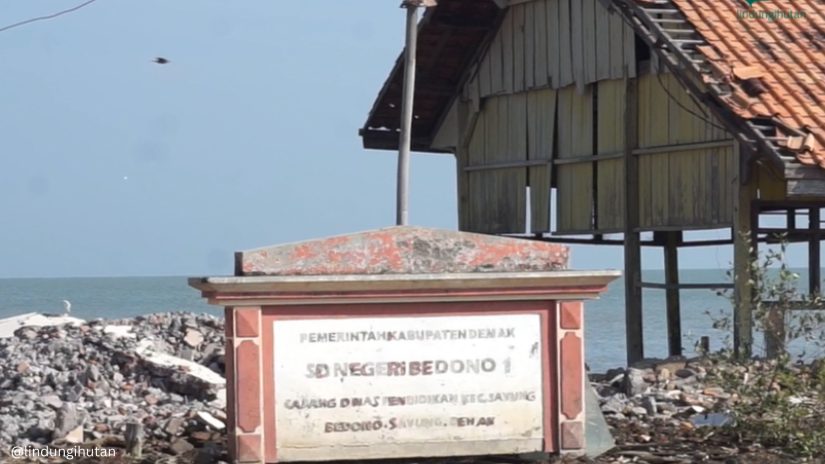
Athanasia Safitri
Aliyuna Pratisti, a lecturer and independent writer, completed her doctoral degree earlier this year with research focusing on the religious dimension in coastal adaptation processes. She presented her findings on the Wednesday Forum on 8 May where she narrated two Muslim communities’ responses to the coastal abrasion on the northern coast of Java. She claimed that her research aims to explore the interaction of religion and adaptation from Muslims’ perspectives since these two Muslims experienced coastal abrasion and included religious dimensions in their adaptive strategies.
From four affected towns in the north coast of Java based on the International Organization of Migration Report in 2019, Pratisti decided to narrow down her research focusing on the villages whose communities live in vulnerable conditions due to environmental changes. The participation of religious dimension in their adaptation process also played an important role which eventually short-listed her object of research into the Muslim community in Bedono of Demak, Central Java, and in Pantai Bahagia of Bekasi, West Java. Environmental changes in the affected areas include drowned hamlets, destroyed barrier islands, and continuous coastal floods that lead to abrasion.
Adaptation strategies
The Muslims’ religious interpretation and practice which interacted with their adaptation process to the environmental changes was seen through interviews, group discussions, and close observation of the communities. Their adaptive strategies vary from protection, accommodation, and relocation strategies. In Bedono they focus more on maintaining the connection with their sacred tomb Kiai Mudzakir, while in Pantai Bahagia there have been steps to accept the environmental changes and prevent further damage.
Pratisti explained that the community in Bedono replants mangroves and builds wave barriers as a protection strategy, elevates houses and mosques for accommodation strategy, and relocates at a close distance for relocation strategy. She continued that in Pantai Bahagia, the community does not only replant mangroves but also builds embankments as a protection strategy, does partial house elevation and mosques as an accommodation strategy, and makes relocation within and inter-village for relocation strategy.
Religious contributions to adaptation processes
The interaction of the religious dimension with the environmental adaptation process creates renewed traditions and rituals. The Bedono community believes in Kiai Mudzakir’s blessing that the pilgrim activity in the ‘floated tomb’ is perceived as a blessing that provides a way to survive and adapt to the drowning condition. While in Pantai Bahagia, the locals embrace ‘Qodarullah’ to symbolize their acceptance of the changing environment. In addition to that, they consider replanting mangroves as a payback to their parents’ past sins so that the abrasion may be reduced gradually.
Conducting religious practices can be viewed as a coping mechanism to the changes in the environment, such as doing istighosah (collective praying) and routine recital of the Qur’an in Bedono; and dzikr to request safety, drinking air do’a (blessed water) to relieve stress in Pantai Bahagia. It is believed to be a kind of shield and strength; a protection from the stressor. Other effects lie in the creation of economy Muslim-based activities related to Kiai’s tomb as people visit the site to pray and seek peace and blessing. While the former can be seen as direct interactions toward the community as in the safe feeling and refuge state of mind, the latter is considered indirect since it responds to the community’s physical needs in the adaptation process.
The community history and experience provide a framework to engage with community adaptation processes. However, it is still in question whether religious belief may favor or hinder the long-term adaptive strategy. Pratisti concluded that even so, the interactions between religious, experiential, and historical frames have shaped the narrative of the inundation of the Muslim communities on the northern coast of Java.
One interesting point from the discussion on the Q&A session is the concern whether there is any involvement from third parties regarding the adaptation process along with the religious dimension. Further analysis needs to be done to see if there is any contribution from government officials to minimize the abrasion or any visible participation due to the massive business activities and other stakeholders.
